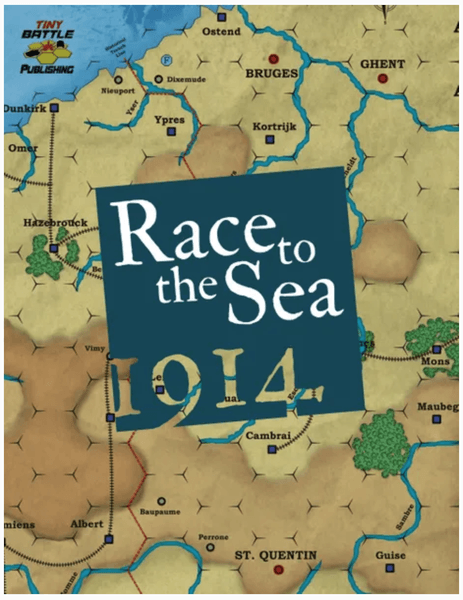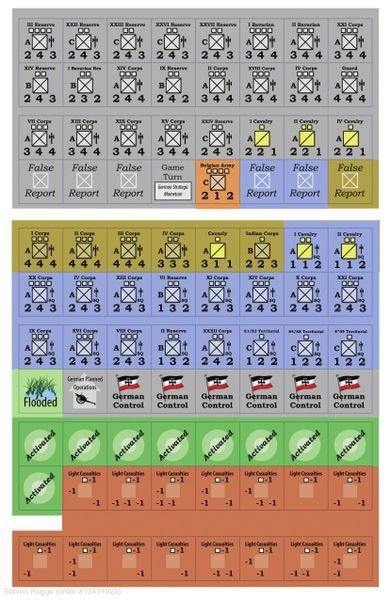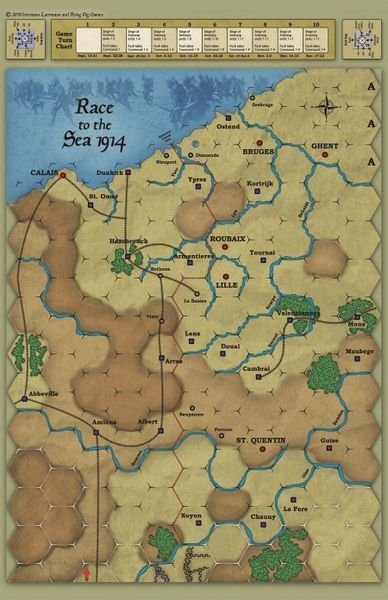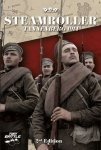-
Załączniki bezpieczeństwa
Załczniki do produktuZałączniki dotyczące bezpieczeństwa produktu zawierają informacje o opakowaniu produktu i mogą dostarczać kluczowych informacji dotyczących bezpieczeństwa konkretnego produktu
-
Informacje o producencie
Informacje o producencieInformacje dotyczące produktu obejmują adres i powiązane dane producenta produktu.Tiny Battle Publishing
-
Osoba odpowiedzialna w UE
Osoba odpowiedzialna w UEPodmiot gospodarczy z siedzibą w UE zapewniający zgodność produktu z wymaganymi przepisami.
After the Battle of the Marne was won by the Allied armies in early September 1914, the Germans withdrew to a formidable position north of the Aisne River and entrenched themselves on the high ground. Numerous French efforts to dislodge them failed and the two great hosts stared at each other from their respective trenches. German General Erich von Falkenhayn and French Marshal Joseph Joffre realized that there was much open, exploitable territory to the north of these solidified lines and each prepared to maneuver around the flanks of his opponent. These mutual and simultaneous flanking moves resulted in a series of headlong battles that gradually shifted the forces north toward the French Channel coast. These maneuverings yielded a series of encounter battles at Picardy, Albert, Artois, La Bassee and along the Yser River. But these engagements were ultimately indecisive and the campaign’s final stage was set for the dramatic clash at the end of the “race”, at the ancient textile city of Ypres.
The “Race to the Sea” campaign was the last mobile campaign on the western front of the First World War – a last chance for victory. It was a final push to get “home before the leaves fall”. But the resulting murderous battles – culminating in the infamous “Kindermord von Ypern” (the Massacre of the Innocents at Ypres) – were so bloody and indecisive that their effects instead directly lead to the creation of the Western Front trench lines and to a continuation of a war that seemed would never end.
The game system is based on the same system used in the game Dead Reckoning by Tiny Battle Publishing. There are no dice, no CRT's, no lists of modifiers and no combat factors. A card-based combat resolution and initiative bidding system drives the action, along with a random event table that provides variety, WWI theme and campaign-specific events.
The game includes:
One 12" x 18" map
88 counters
36 cards (12 Initiative and 24 Combat Results)









